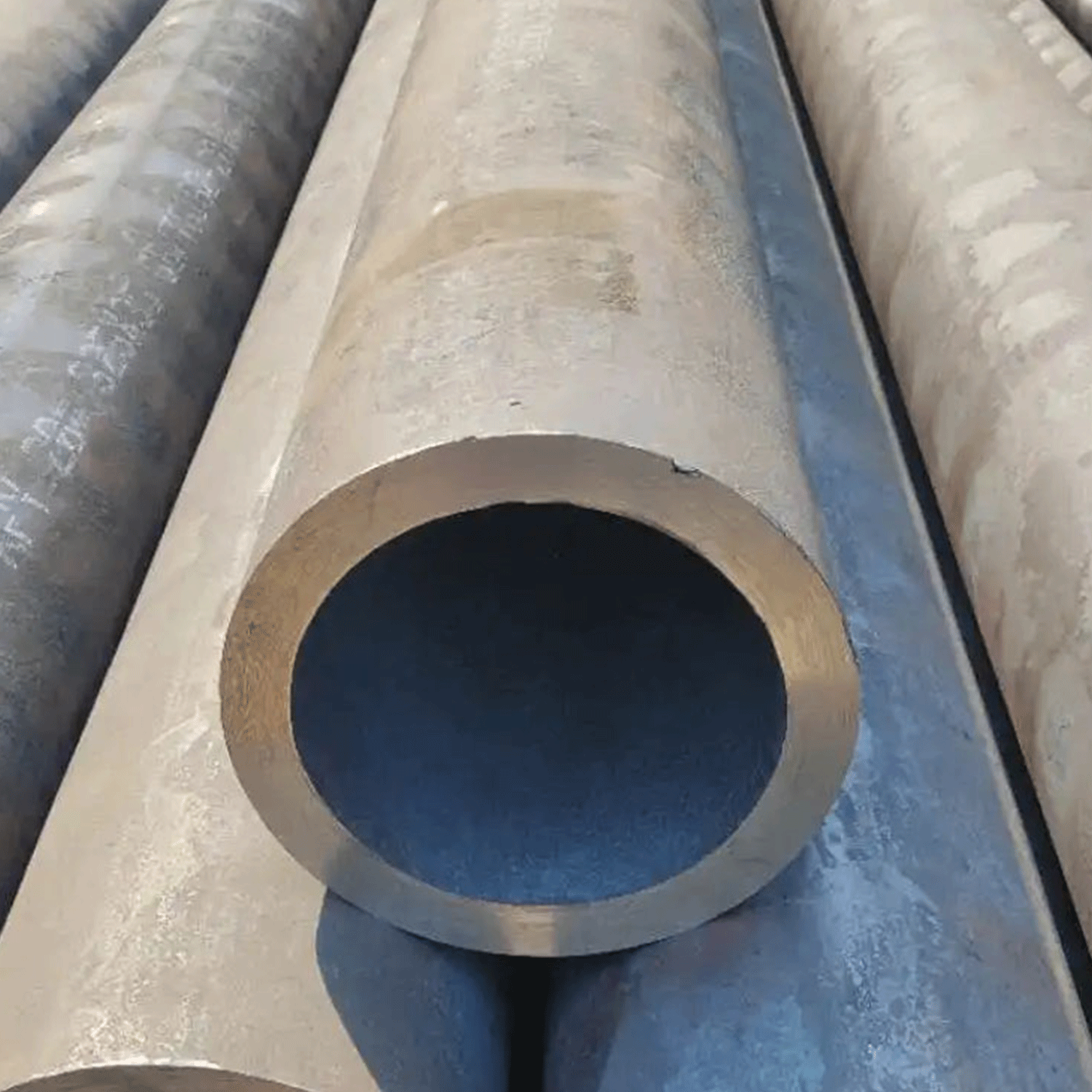Seamless Steel Tubes for Structural Use
Classification:
Key words:
Seamless steel tubes for structural purposes
Seamless Steel Tubes for Structural Use
1. Definition And Characteristics
Seamless steel pipe for structural use, as the name suggests, is a seamless steel pipe used for structural and mechanical parts. It is made by hot-rolling, cold-rolling or cold-drawing process, with smooth inner and outer walls, precise dimensions, capable of withstanding high working pressure and temperature, and with long service life and low maintenance cost. Compared with welded steel pipe, seamless steel pipe shows more excellent performance in pressure capacity, corrosion resistance and overall strength.
2. Material And Classification
Seamless steel pipe for structural use is made of various materials, including carbon steel, alloy steel, stainless steel and so on. Each material exhibits specific physical, chemical and mechanical properties according to its chemical composition and heat treatment. For example, stainless steel seamless steel pipe not only has good corrosion resistance, but also possesses high strength and toughness, which is widely used in chemical, petroleum, pharmaceutical and other fields that require highly clean and corrosion-resistant environments.
3. Standards And Specifications
The production and inspection of seamless steel pipe for structural use follow a series of national and industry standards, such as GB/T14975-1994 ‘Stainless Steel Seamless Steel Pipe for Structural Use’. These standards specify the classification, code, size, shape, technical requirements, test methods, inspection rules, packaging, marking and quality certificates of steel pipe. In terms of specifications, there is a wide range of sizes of seamless steel pipes for structural use, with the outer diameter and wall thickness depending on specific needs. For example, the length of hot rolled (extruded and expanded) steel pipe is generally 3-12m, and the length of cold rolled (drawn) steel pipe is 2-10.5m.
4. The Production Process
The production process of seamless steel pipe for structure mainly includes piercing, hot rolling (or cold rolling, cold drawing), heat treatment, inspection and other steps. Raw materials are usually round billets or ingots, after piercing to form a rough tube, and then through hot rolling or cold rolling (cold drawing) and other processes into the required specifications of the steel pipe. Steel pipes need to be inspected and tested several times during the production process to ensure that their quality meets the standard requirements.
5. Application Fields
Seamless steel pipe for structure is widely used in chemical, petroleum, light textile, medical, food, machinery and other industrial fields. In the chemical and petroleum industries, it is mainly used for conveying corrosive media and high-temperature and high-pressure fluids; in the light textile industry, it is used in the manufacture of various textile machinery and printing and dyeing equipment; in the medical and food industries, it is favoured for its good corrosion resistance and cleanliness. In addition, with the integration and application of intelligent manufacturing, big data, Internet of Things and other advanced technologies, the production process of seamless steel pipe will be more intelligent and automated, and the production efficiency and product quality will be further improved.
6. The Future Development Trend
With the transformation of the global energy structure and the rapid development of clean energy, the application of seamless steel pipe in the field of new energy will also continue to expand. For example, in the wind, solar and other renewable energy power generation equipment, seamless steel pipe will play a more important role. At the same time, with the improvement of environmental protection requirements and the intensification of market competition, seamless steel pipe industry will continue to strengthen technical research and development and product innovation, improve product quality and value-added to meet market demand.
Enterprise Culture
The company adheres to the principle of people-oriented, knowledge and ability, in line with the principle of selecting human resources with both ability and political integrity, focuses on the long-term development of the enterprise, and implements the strategy of "strengthening the enterprise with talents". Through various forms of expert professional training, employees participate in training every year The time has accumulated to 15 days, and let all the vitality of life, labor, knowledge, technology, management and capital burst out to achieve a win-win situation for enterprises and talents.
Based on a new starting point, create a new situation

Excellence
Learning is to perfect life, not to enjoy life, the pursuit of excellence, success will come to you by surprise. The highest reward for human excellence is not what you get. It's what you became along the way.

Innovation
An enterprise can have its own ideas, unique ideas, and can use its own unique ideas and ways of thinking to innovate, to realize its own value and meaning of life, to serve others, to serve the society and even the country.

Integrity
Honesty is not only the traditional virtue of the Chinese nation, but also a basic moral responsibility of citizens, and the foundation of dealing with people. Contemporary enterprises must have the moral character of honesty and trustworthiness in order to be invincible in the fierce social competition in the future.

Unity
Solidarity is indeed a spirit, born of trust, pervasive and, more importantly, immeasurable. This era calls for many spirits, and the spirit of unity will always be an inexhaustible driving force to push the times forward.

Professional
Professional is a realm, professional is a pursuit of life, is the work of excellence. Specialty is the foundation of industry and enterprise development, and the development of industry is the solid backing of enterprise development.

Efficiency
Efficiency is the direction, is the power. Only by constantly improving technology, increasing labor productivity, so that individual labor time is lower than the necessary social labor time, in order to obtain more benefits. In order to be in a favorable position in the competition, otherwise it will be eliminated in the competition.
Honor
Related Products


